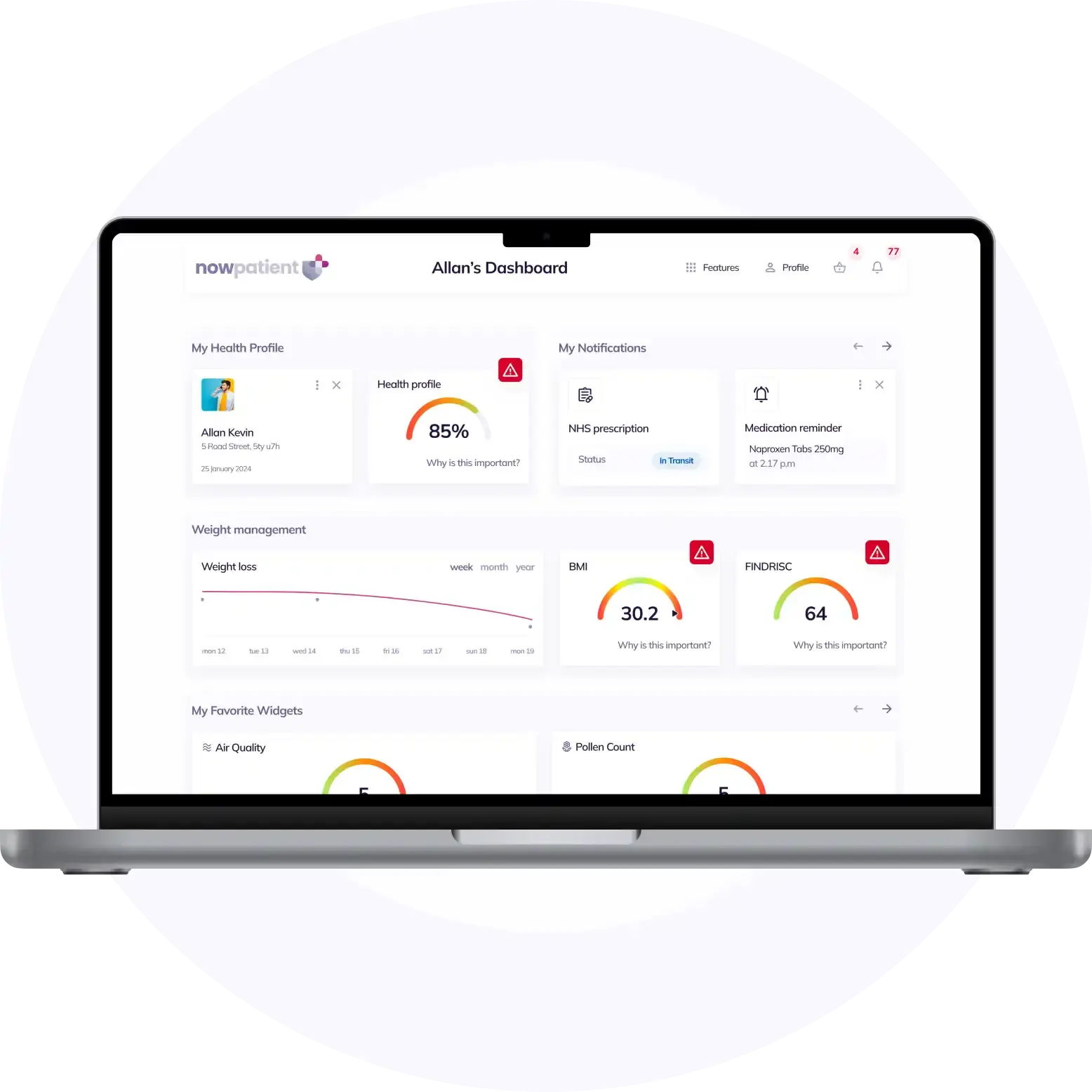Embolism
Treatments & Medications
Is the cost of your Embolism medication too expensive or unaffordable?
You may qualify for programs where you can pay as little as $0 per fill, subject to income and insurance status.
This content is intended for US audiences only

Pulmonary embolism is a serious condition where a blood clot blocks an artery in the lung. This is often caused by a venous thrombosis in the lower limbs which can reduce oxygen levels in the blood. Death usually occurs within the first few hours of a pulmonary embolism, making early detection all that more important.
Here, we will take a closer look at what pulmonary embolism is, its causes, symptoms, diagnosis and treatments.
What is Embolism?
A pulmonary embolism (PE) is when a blood clot blocks an artery in the lung, most commonly these are blood clots originating in the veins of the legs, and are better known as deep vein thrombosis (DVT). These clots can break and travel through the right side of the heart into the lungs, cause serious blockages.
Types and causes of Pulmonary Embolism
- Blood clots are the main cause of PE, most commonly starting as DVT’s in the legs
- Fat emboli are rarer, with fat from broken bones entering the bloodstream, causing an embolism
- Air bubbles can be introduced into the blood circulation during medical procedures, leading to blockages
- Tumor cells may break away, causing obstructions in blood vessels in the lungs
Impact on health
A pulmonary embolism is life-threatening, especially if it is a large clot or if there are many of them. The lack of oxygen may cause damage to other organs and in severe cases, can cause death.
Causes and risk factors
Risk factors for pulmonary embolism include:
- Genetic predispositions such as inherited thrombophilias
- A family history of blood clotting disorders
- Endothelial injury, stasis or turbulence of blood flow
- Blood hypercoagulability
Medical conditions and lifestyle factors
Other medical conditions and lifestyle choices can also increase the risk of PE. These include:
- Long flights or bed rest
- Chronic conditions, such as heart failure or severe lung diseases
- Obesity
- Smoking
- Birth control pills or hormone replacement therapy
- Other medical conditions, such as cancer and its treatment
- Surgical procedures
- Age, particularly in older adults
- Pregnancy
Symptoms and diagnosis of Pulmonary Embolism
Recognizing symptoms of Pulmonary Embolism
Pulmonary embolism symptoms can vary, depending on the size of the clots, how much of your lung is affected, and if you have other underlying lung or heart disease.
Common symptoms of a pulmonary embolism include:
- Sudden unexpected shortness of breath
- Chest pain that becomes worse when coughing, eating or taking deep breaths
- Swelling, pain, tenderness, or redness in one leg
- Dizziness, lightheadedness, sweating or a rapid pulse
Seek medical attention immediately if these symptoms occur, especially if sudden and severe.
Diagnostic procedures for Pulmonary Embolism
Diagnostic tests include:
- D-Dimer Blood Test
- CT scans using X-rays to make detailed images of the body
- Pulmonary Angiography: Injecting dye into blood vessels in the lungs to detect the blockages
- Ultrasound of the legs to check for clots that could travel to the lungs
- Ventilation-perfusion scans (V/Q scan)
- MRI imaging tests most useful if pregnant
- Medical history and a physical exam
Results from these tests will help guide healthcare providers with the most appropriate treatment strategies.
Treatment options for Pulmonary Embolism
Anticoagulant medications
Anticoagulants (blood thinners), are the most common form of treatment for pulmonary embolisms. These prevent new clots from forming, but also stop existing clots from getting larger. These include:
- Heparin, which is administered intravenously for fast action
- Warfarin, which requires close monitoring to ensure correct dosing
- Direct Oral Anticoagulants (DOACs): Such as apixaban, dabigatran, or rivaroxaban
You will normally be started on injections and progress to oral medications, which you may need to take for 3 months or longer periods of time, depending on your condition and how you respond to treatment.
Advanced treatment options
When anticoagulants are not suitable, alternatives include:
- Thrombolytic therapy using a catheter to dissolve clots quickly, but are used for life-threatening situations only, due to there side effects of severe bleeding
- A long, thin, hollow tube (catheter) can be threaded through the blood vessel to the site of the embolism guided by X-ray. Once the catheter is in place, it’s used to break up the embolism, pull it out, or dissolve it using thrombolytic medicine.
- Surgical interventions such as embolectomy or percutaneous thrombectomy
- Inferior Vena Cava (IVC) implants to prevent clots reaching the lungs
Ongoing care and monitoring
Management of Pulmonary Embolism requires:
- Regular follow-ups to monitor the treatment and adjust dosages
- Compression stockings to improve the flow of blood in the legs and prevent deep vein thrombosis
- Lifestyle changes such as diet and physical activity to improve health and to reduce the risk of clotting. Quit smoking and weight management to reduce blood pressure and the risk of DVTs
- Staying hydrated to prevent blood thickening and the formation of clots
You must maintain regular check-ups with your healthcare provider to prevent future recurrence and to manage any side effects of medication taken for long periods of time.
Frequently Asked Questions about Pulmonary Embolism
What is a pulmonary embolism?
Pulmonary embolism is a serious condition where a blood clot blocks an artery in the lungs. The blood clot often comes from a clot in the legs or another part of the body, and is known as deep vein thrombosis (DVT). Genetic mutations and lifestyle, including pregnancy, can increase the risk.
What are the different types of pulmonary embolisms?
There are 3 types of pulmonary embolisms: acute, subacute, and chronic.
What happens during a pulmonary embolism?
In a pulmonary embolism, a blood clot from another part of the body travels to the lungs, blocking an artery and restricting the flow of blood to your lungs. This lowers your oxygen levels and increases your blood pressure in your pulmonary arteries.
Sources
- Pulmonary Embolism – Hopkins Medicine
- Pulmonary Embolism – NHS
- Pulmonary Embolism – Yale Medicine
- Pulmanary Embolism CDC
Medical Disclaimer
NowPatient has taken all reasonable steps to ensure that all material is factually accurate, complete, and current. However, the knowledge and experience of a qualified healthcare professional should always be sought after instead of using the information in this page. Before taking any drug, you should always speak to your doctor or another qualified healthcare provider.
The information provided here about medications is subject to change and is not meant to include all uses, precautions, warnings, directions, drug interactions, allergic reactions, or negative effects. The absence of warnings or other information for a particular medication does not imply that the medication or medication combination is appropriate for all patients or for all possible purposes.
What is NowPatient
Telehealth and Online Pharmacy
NowPatient is a licensed online pharmacy and doctor service that is available around the world. Our service is FREE and packed with valuable features that can benefit your health such as medication reminders, educational blogs, medically approved symptoms checker, UK NHS online pharmacy, private treatment plans, Rx Advantage card, health conditions information, affordable medications options, genetic testing, home test kits, health risks, pollen meter, air quality monitor, weight loss plans, drug savings programs and lots more!

WHY WE BUILT NOWPATIENT
To improve the lives of everyone by making high-quality care accessible and convenient
We are here to improve lives. Our service gives you access to smart features and resources that can help empower you to take control of your health and improve your health outcomes. All this, in one place, for FREE. We strive to bring a fresh perspective to managing health. NowPatient can be accessed by downloading the App or using your web browser.
Download our app today

Can I trust NowPatient
Meet our medical team
We are a passionate group of clinicians and medical writers covering a broad range of specialities with experience operating in health systems in the United Kingdom & United States. Providing excellent care and advice is at the heart of everything we do. You can read more about our medical team by visiting the medical team page or learn more about how we curate content by visiting our editorial process
